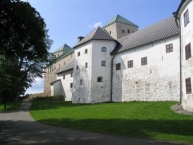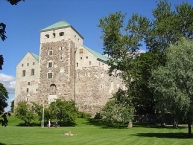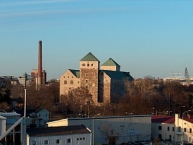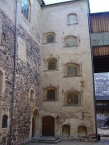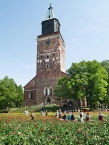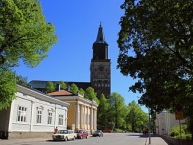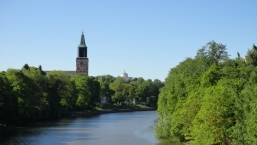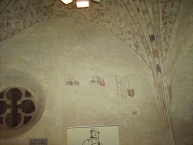Cycle Route Turku/Åbo - Nauvo/Nagu - Parainen/Pargas - Turku/Åbo
No. of cycle route 30
Actions
![]()
Please wait - map data are loading
Added on 27 Dec 2011,
last edited by biroto-Redaktion on 30 Oct 2023
Actions
Cycle route metrics
Total distance in km
202
Information about rights to the gps-track data | |
|---|---|
Rights owner | OpenStreetMap and Contributors + biroto-Redaktion (biroto.eu) |
Rights characteristic / license | Contains information from OpenStreetMap, which is made available here under the Open Database License(ODbL) |
Link to the description of the license | |
GPX file taken from | |
GPX file uploaded | by biroto-Redaktion on 30 Oct 2023
|
Track points in total
3.514
Track points per km (avg)
15
Start/endpoint
Start location
Turku, LS, FI (10 m NHN)
End location
Turku, LS, FI (12 m NHN)
Beds4Cyclists, worth visiting and infrastructure
Name and address
Latitude / Longitude
Phone
Fax
Mobile
Type of accommodation
Rating for cyclists
Route km
Dist. to route
Elevation
3 km
0,1 km
8 m
Information about copyright | |
|---|---|
Rights owner | w:User:Yumestarlet |
Rights characteristic / license | by-sa: CREATIVE COMMONS Attribution-ShareAlike |
Link to the description of the license | |
Image taken over from | |
Image has been uploaded | by Ottocolor on 15 Apr 2013
|
Information about copyright | |
|---|---|
Rights owner | erno. aus Turku, Finland |
Rights characteristic / license | by-sa: CREATIVE COMMONS Attribution-ShareAlike |
Link to the description of the license | |
Image taken over from | commons.wikimedia.org/wiki/File:Castle_of_Turku,_old_side.jpg |
Image has been uploaded | by Ottocolor on 15 Apr 2013
|
Information about copyright | |
|---|---|
Rights owner | Tapi0 |
Rights characteristic / license | by-sa: CREATIVE COMMONS Attribution-ShareAlike |
Link to the description of the license | |
Image taken over from | commons.wikimedia.org/wiki/File:Turun_linna_Turku_Finland.jpg |
Image has been uploaded | by Ottocolor on 15 Apr 2013
|
Information about copyright | |
|---|---|
Rights owner | Erno Miettinen from Turku, Finland |
Rights characteristic / license | by-sa: CREATIVE COMMONS Attribution-ShareAlike |
Link to the description of the license | |
Image taken over from | |
Image has been uploaded | by Ottocolor on 15 Apr 2013
|
Turku Castle (Finnish: Turun linna, Swedish: Åbo slott) is a medieval building in the city of Turku in Finland. Together with Turku Cathedral
, the castle is one of the oldest buildings still in use in Finland. Turku Castle is the largest surviving medieval building in Finland. It was founded in the late 13th century and stands on the banks of the Aura River
.
History
A start was made on building the castle in about 1280. The Swedish conquerors of Finland intended it originally as a military fortress . During the next two centuries its defences were strengthened and living quarters were added. The castle served as a bastion
and administrative centre in Eastland, as Finland was then known, during the Swedish period. The main part of the castle was extended considerably during the 16th century after Gustav Vasa
had ascended the Swedish throne and his son John
headed the Finnish administration following his promotion to duke. The bailey
was also supplemented and the round tower at the southeast corner of the bailey was added. Since then no part of the castle has been added or extended, only repaired.
The castle was ruled in different stages of its history by the castle sheriff, commander, regent, duke or governor-general. Its significance as a defensive fortress and administrative centre varied throughout the ages according to the political situation. Only once did the castle actually figure in the defence of the realm. This was when Russian invaders from Novgorod destroyed Turku in 1318. On the other hand, it frequently played a role in internal struggles for power within Sweden-Finland and the Kalmar Union
. Not until the end of 16th century did it really enjoy peace. The castle lost its status as an administrative centre in the 17th century after Per Brahe
's period as governor-general of Finland came to an end.
Construction
The layout of the castle consists of the Medieval keep (päälinna) and Renaissance bailey
(esilinna). The keep consists of a square fort with two square gateway towers whose wall thickness at the base is some 5 meters.
In the Middle Ages the castle was surrounded by a moat conjoining with the River Aura
, the castle effectively lying on an island. The keep was completed in the early 15th century. Construction of the bailey was begun in the late 15th century and finished in the 16th. The bailey is not as heavily fortified as the keep, but it has several turrets
. The Renaissance construction work included heavy modification of nearly all the rooms in the older medieval part of the castle. Since the Renaissance no additions have been made to the castle.
The modest military fortification grew into a massive greystone castle, whose solid walls have witnessed many milestones in Nordic history. The castle has been subject to numerous sieges
and several battles have been waged aside its walls. Of all Finnish castles, Turku castle has the most warlike history besides Vyborg castle
and Olavinlinna
.
Information about copyright | |
|---|---|
Rights characteristic / license | by-sa: CREATIVE COMMONS Attribution-ShareAlike |
Link to the description of the license | |
Input taken over from: |
Turku Castle. (2013, March 25). In Wikipedia, The Free Encyclopedia. Retrieved 17:41, April 15, 2013, from http://en.wikipedia.org/w/index.php?title=Turku_Castle&oldid=546966293 |
taken over / edited on | 15 Apr 2013
|
taken over / edited by |
|
Hours of opening
- Tue–Sun 10–18
- Mondays closed
Limited opening times 2013
- Thur 28 March 10–15
- Tue 30 April 10–15
- Thur 20 June 10–15
- Thur 5 December 10–15
The museum is closed
- 29 March – 1 April
- 1 May
- 9 May
- 21–23 June
- 6 December
- 24–25 December
- 31 December – 1 January
233 km
0,1 km
12 m
Information about copyright | |
|---|---|
Rights owner | Andrei Niemimäki from Turku, Finland |
Rights characteristic / license | by-sa: CREATIVE COMMONS Attribution-ShareAlike |
Link to the description of the license | |
Image taken over from | |
Image has been uploaded | by Ottocolor on 15 Apr 2013
|
Information about copyright | |
|---|---|
Rights owner | DreferComm |
Rights characteristic / license | by-sa: CREATIVE COMMONS Attribution-ShareAlike |
Link to the description of the license | |
Image taken over from | |
Image has been uploaded | by Ottocolor on 15 Apr 2013
|
Information about copyright | |
|---|---|
Rights owner | Mulberry24 |
Rights characteristic / license | by-sa: CREATIVE COMMONS Attribution-ShareAlike |
Link to the description of the license | |
Image taken over from | commons.wikimedia.org/wiki/File:Aura_River_and_Turku_Cathedral,_Turku_(20110603).jpg |
Image has been uploaded | by Ottocolor on 15 Apr 2013
|
Information about copyright | |
|---|---|
Rights owner | Harri Blomberg |
Rights characteristic / license | by-sa: CREATIVE COMMONS Attribution-ShareAlike |
Link to the description of the license | |
Image taken over from | commons.wikimedia.org/wiki/File:Helga_Korsets_kapell_i_Åbo_domkyrka,_den_27_juni_2007,_bild_5.jpg |
Image has been uploaded | by Ottocolor on 15 Apr 2013
|
Turku Cathedral (Finnish: Turun tuomiokirkko, Swedish: Åbo domkyrka) is the Mother Church of the Evangelical Lutheran Church of Finland
, and the country's national shrine
. It is the central church of the Archdiocese of Turku
and the seat of theArchbishop of Finland
, Kari Mäkinen
. It is also regarded as one of the major records of Finnish architectural history.
Considered to be the most important religious building in Finland, the cathedral has borne witness to many important events in the nation's history and has become one of the city's most recognizable symbols. The cathedral is situated in the heart ofTurku next to the Old Great Square
, by the river Aura
. Its presence extends beyond the local precinct by having the sound of its bells chiming at noon broadcast on national radio. It is also central to Finland's annual Christmas
celebrations.
The cathedral was originally built out of wood in the late 13th century, and was dedicated as the main cathedral of Finland in 1300, the seat of the bishop of Turku
. It was considerably expanded in the 14th and 15th centuries, mainly using stone as the construction material. The cathedral was badly damaged during the Great Fire of Turku
in 1827, and was rebuilt to a great extent afterwards.
As the town of Turku began to emerge in the course of the 13th century as the most important trading centre in Finland, the Bishop's see of the Diocese of Finland was transferred from its previous location at Koroinen , some distance further up on the bank of Aura river, to the middle of the town. By the end of the 13th century, a new stone church had been completed on the site of the former wooden-built parish church on Unikankare Mound, and it was consecrated in 1300 as the Cathedral Church of the Blessed Virgin Mary
and Saint Henry
, the first Bishop of Finland.
At its earliest the cathedral was smaller than the present building. Its east front was where the pulpit stands now, and its roof was considerably lower than at the moment. Extensions were made to the cathedral throughout the Middle Ages. During the 14th century a new choir was added, from which the octagonal Gothic pillars in the present chancel
originate. Throughout the Middle Ages, the High Altar
was located opposite the easternmost pillars of the nave
, until it was transferred to its present location in the apse
, in what had previously been the Chapel
of All Saints, in the mid-17th century.
During the 15th century, side-chapels were added along the north and south sides of the nave, containing altars dedicated to various saints. By the end of the Middle Ages these numbered 42 in total. The roof-vaults were also raised during the latter part of the 15th century to their present height of 24 meters. Thus, by the beginning of the Modern era , the church had approximately taken on its present shape. The major later addition to the cathedral is the tower, which has been rebuilt several times, as a result of repeated fires. The worst damage was caused by the Great Fire of Turku
in 1827, when most of the town was destroyed, along with the interior of both the tower and the nave and the old tower roof. The present spire of the tower, constructed after the great fire, reaches a height of 101 meters above sea level, and is visible over a considerable distance as the symbol of both the cathedral and the city of Turku itself.
Information about copyright | |
|---|---|
Rights characteristic / license | by-sa: CREATIVE COMMONS Attribution-ShareAlike |
Link to the description of the license | |
Input taken over from: |
Turku Cathedral. (2013, February 27). In Wikipedia, The Free Encyclopedia. Retrieved 19:31, April 15, 2013, from http://en.wikipedia.org/w/index.php?title=Turku_Cathedral&oldid=540951775 |
taken over / edited on | 15 Apr 2013
|
taken over / edited by |
|
Hours of opening
Daily 9 a.m. - 7 p.m.
(in the summer till 8 p.m.)
Please observe services and events.

